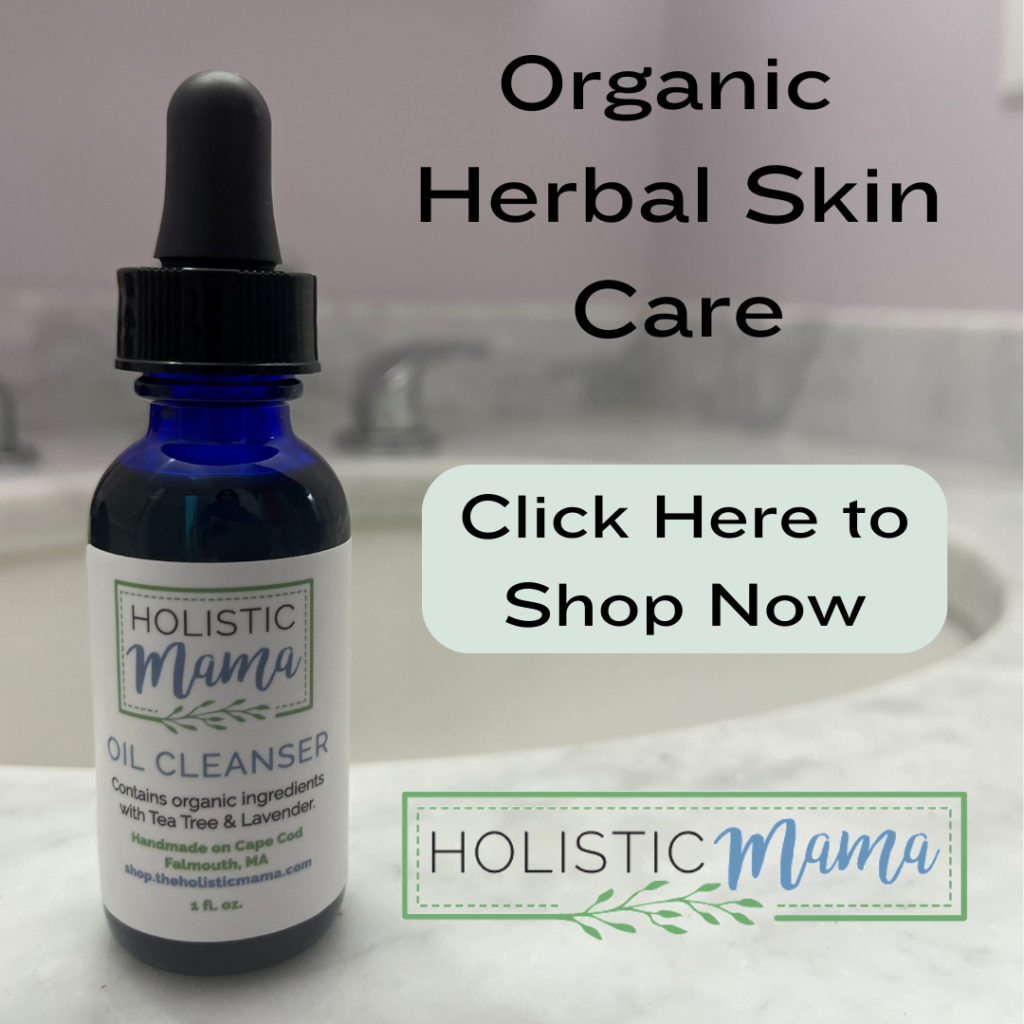-
How to Make a Herb Infused Oil
Category: Herbalism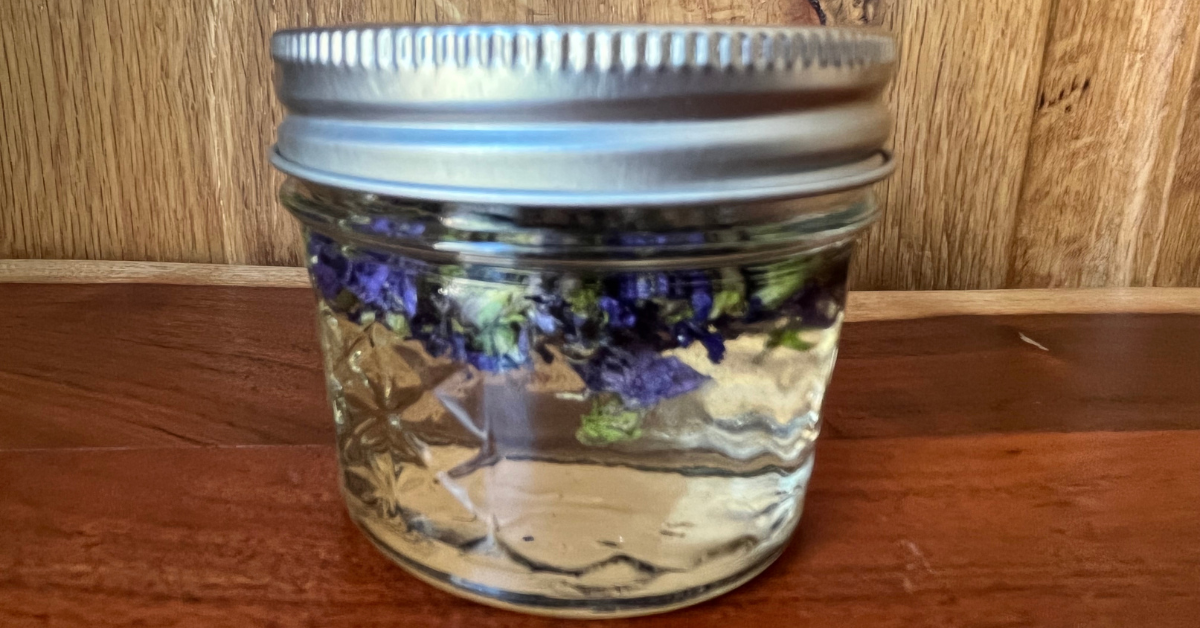
Herb infused oil is one of the basic recipes needed to create salves, oil serums, body butters and more. You can make a herbal infused oil by soaking dried herbs in a carrier oil. An herbal oil infusion extracts all the active fat soluble ingredients from the herb into the carrier oil so you can receive all its healing benefits. This process does not require any heating, it only requires time and patience.
It's important to note that infused oils are not the same as essential oils. Essential oils are only the plant's volatile oils that are extracted by steam distillation. Similarly, Infused oils are in skin care, hair care, and great for culinary purposes.
How to Make a Herb Infused Oil
Standard Ratio
- 250g dried herb
- 3 cups carrier oil – olive oil, almond oil, coconut oil, or any other high quality organic oil.
Step by Step Instructions
- First, measure out your herbs and place in a clear glass jar.
- Pour oil until it completely covers the herb, close the jar, and shake well. Place the jar in a sunny spot, such as a windowsill, and leave for 4-6 weeks.
- After the infusion time is over, pour the oil into a muslin cloth, fine metal strainer, or use an herb press. Allow all of the oil to filter through and press or squeeze the remaining oil from the herbs.
- Lastly, pour the infused oil into a dark glass bottle, label and store.

Herb Infused Oil
Ingredients
- 250 g dried herb
- 3 cups carrier oil – olive oil almond oil, avocado oil, or any other high quality organic oil.
Instructions
- First, measure out your herbs and place in a clear glass jar.
- Pour oil until it completely covers the herb, close the jar, and shake well. Place the jar in a sunny spot, such as a windowsill, and leave for 4-6 weeks.
- After the infusion time is over, pour the oil into a muslin cloth, fine metal strainer, or use an herb press. Allow all of the oil to filter through and press or squeeze the remaining oil from the herbs.
- Lastly, pour the infused oil into a dark glass bottle, label and store.
How to Make an Infused Oil Faster
The process outline in this article is the folk method of making an herb infused oil. Some herbalists believe it makes the best and most potent infused oils. If you need or want to make an herb infused oil in less time it is possible by using heat. For detailed instructions on this method, read this article How to Make a Heat Infused Herbal Oil Quickly.
Tips & Tricks
Seedling Mat
If you are infusing multiple oils and don't have enough window sill space or it's winter and not sunny, use a seedling mat like this one to keep the jar lightly warm and to encourage the infusion.
Use Good Quality Herbs
Foraged herbs are usually the best quality and freshness. Many common herbs grow in your backyard and can be used to make herbal oils. You will not find all herbs in your local area so its important to buy good quality herbs. An online source for herbs that I like is Starwest Botanicals.
Always Used Dried Herbs
It's best to use dried herbs when infusing oils because fresh plant matter will release moisture into the oil which can cause mold growth. You can air dry fresh herbs by laying them out on a table, using an herb drying rack, or a dehydrator.
Storage
Store in a sterilized, airtight, dark glass bottle for up to 1 year, for best results, use within 6 months.
Many of the Holistic Mama handmade products contain infused oils such as Arnica Salve and Coffee Eye Cream.
How long does it take to infuse an oil?
Let your oil infused in a warm spot for at least 4-6 weeks, longer is better. For a quicker infusion, read the instructions in this article, How to Make a Heat Infused Herbal Oil Quickly
What oil is best to infuse?
Most oils that are in a liquid state are appropriate for infusing herbs. The oils that are used most by herbalists are olive oil, and avocado oil. Others may use sunflower oil, almond oil, castor oil or others. You can also use coconut oil with the heat infusion method.
Can you infused oil with fresh herbs?
You should typically not use fresh herbs when infusing oil. The moisture in the fresh herbs can cause mold or rancidity. The exception to this rule is fresh St johns wort flowers. They are most potent when fresh and can be infused into oil.
Thank you for reading this post, don't forget to subscribe to stay in the loop. If you are looking for some of the healthy tools and resources mentioned in my articles, take a look at my healthy shopping guide.
Some of our links are affiliate links, which means if you click and buy, I earn a small commission. The price is the same for you, though. Thank you!
You might also like these posts…
-
How to Make Garlic Ear Oil
Category: Herbalism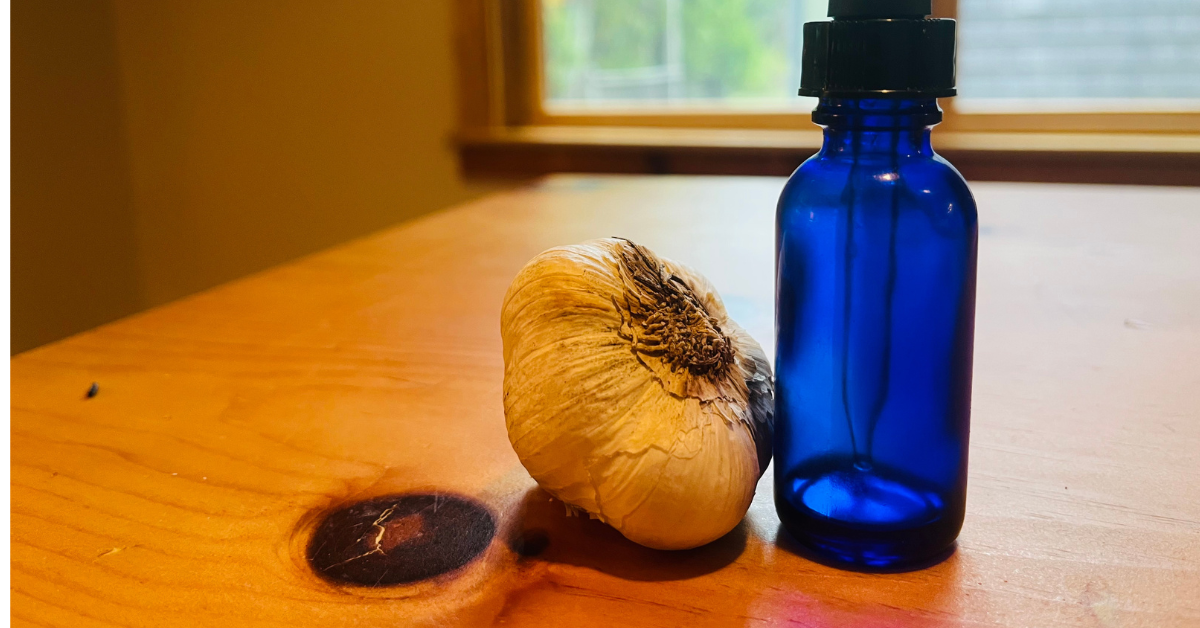
What exactly is garlic ear oil? This remedy was something I learned about when I was a student at the Institute for Integrative Nutrition. One of our teachers at IIN was Dr. John Douillard who is an expert in Ayurveda and a Father to six children. Dr. Douillard talked a lot about things he does on a regular basis to keep his children well. He explained that garlic ear oil was one of the things he uses with his kids on a regular basis in the winter to avoid colds.
What is Ear Oil?
Ear oil is usually olive oil based and mixed or infused with herbs like garlic or essential oils. You may find ear oil preparations sold in health food stores like this one that have a few different varieties but it is also easy to make at home.
How to use Ear Oil
Whether your ear oil is homemade or store bought the method is the same. First, warm the oil with one of two methods. The oil can be lightly heated in a skillet or if you have the oil already made or bought, store it in a glass bottle and heat water in a small pot and sit the glass jar in the water to warm it. The oil only needs to be warm, not hot. Once the oil is warmed, using a medicine dropper slowly drop the oil into the ear canal until the ear is filled with oil. If comfortable for you or your child, use a cotton ball to plug up the ear for a few minutes. Alternatively lay down on the opposite side to let the oil absorb.
Dr Douillard says that he gives his children garlic ear oil regularly as a preventative method. Some find that this method greatly reduces congestion because it lubricates the sinuses and makes the body produce less mucus. Also, the garlic in the oil helps to kill the germs causing the sickness because works great as an antibiotic.
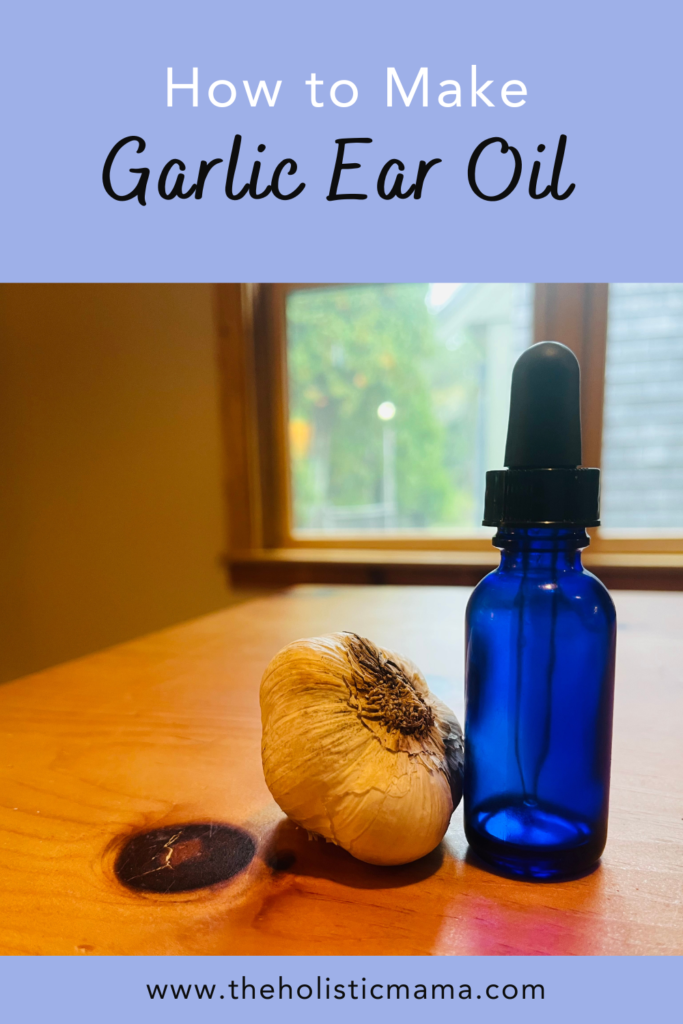
How to make Garlic Ear Oil
Warm a skillet on the stove and pour a tablespoon or two of olive oil into the skillet. Mince 1-2 cloves of garlic and place in the oil. Warm the oil for a few minutes on very low heat. Do not cook until the garlic browns, we only want to lightly infuse the oil. Strain the garlic out of the oil and store in a small glass bottle with a medicine dropper. This will last in the refrigerator for a couple of weeks.
Thank you for reading this post, don't forget to subscribe to stay in the loop. If you are looking for some of the healthy tools and resources mentioned in my articles, take a look at my healthy shopping guide.
Some of our links are affiliate links, which means if you click and buy, I earn a small commission. The price is the same for you, though. Thank you!
You might also like these posts…
-
Should You Exfoliate Acne Prone Skin
Category: Natural Skin Care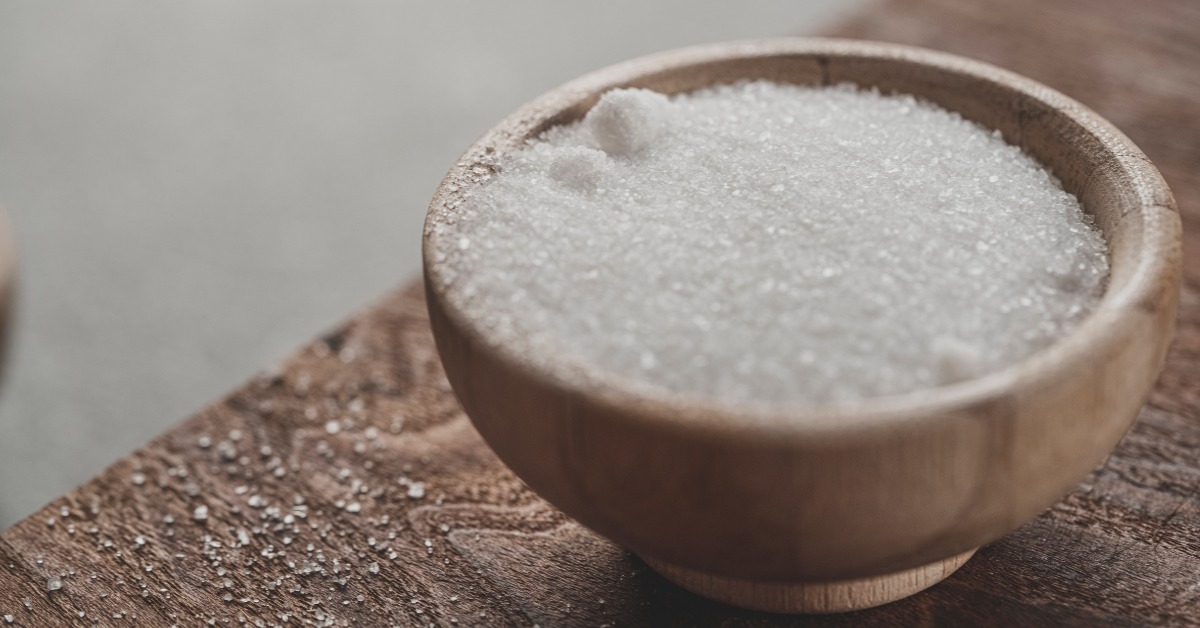
Is it a good idea to exfoliate acne prone skin? The quick answer is, yes. Exfoliation is an important part of any healthy skin care routine. The good news is it can be done in a completely natural way without the use of any harsh chemical products. There are two ways to exfoliate – physical exfoliation and chemical exfoliation both of which can be done with totally natural ingredients.
Ways to Exfoliate Acne Prone Skin
Physical Exfoliation
Keep in mind that it's not a smart idea to go overboard with this method. Gentle exfoliation is key. A warm wash cloth does work well to exfoliate acne prone skin and it works well with the oil cleansing method.
Another great tool is the Konjac Sponge. It's a super soft and gentle sponge that contains charcoal to help pull toxins from the skin. Another way to get a physical exfoliation is by using salt, sugar, or ground up grains to scrub the skin. Salt can be too harsh for your face but other more gentle scrubs work well. Exfoliation is not just for your face, try this DIY coffee body scrub.
Chemical Exfoliation
There are many food items that naturally contain fruit acids and enzymes that help to exfoliate skin. There is no need for expensive prescription or over the counter creams for this purpose. Stronger prescription creams are most likely too strong and doing more damage to your skin.
Here is a list of food items that can be used for chemical exfoliation:
- Salicylic acid: white willow bark, meadowsweet, strawberry
- Lactic acid: yogurt, kefir, fermented vegetables, blackberries, tomatoes
- Citric acid: lemons, limes and oranges (do not use if you plan on being in the sun afterwards)
- Glycolic acid: sugar
- Trans-Retinoic acid: rose hip seed oil
- Papain enzyme: Papayas
- Malic acid: apples, vinegar
Exfoliation is an important part of your skin care routine whether you have acne prone skin or not. The only caveat is to be sure not to overdo it, especially if you have sensitive skin. Also, if you are already using other prescription or chemical products be careful of mixing things without checking with your dermatologist.
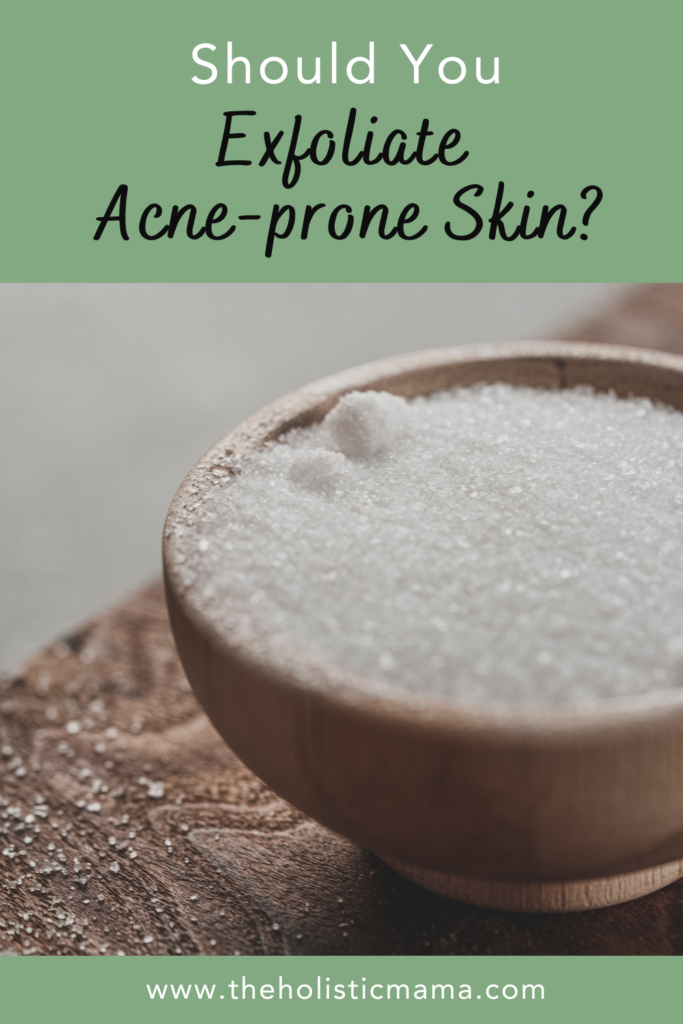
Thank you for reading this post, don't forget to subscribe to stay in the loop. If you are looking for some of the healthy tools and resources mentioned in my articles, take a look at my healthy shopping guide.
Some of our links are affiliate links, which means if you click and buy, I earn a small commission. The price is the same for you, though. Thank you!
You might also like these posts…
Holistic Mama Blog

